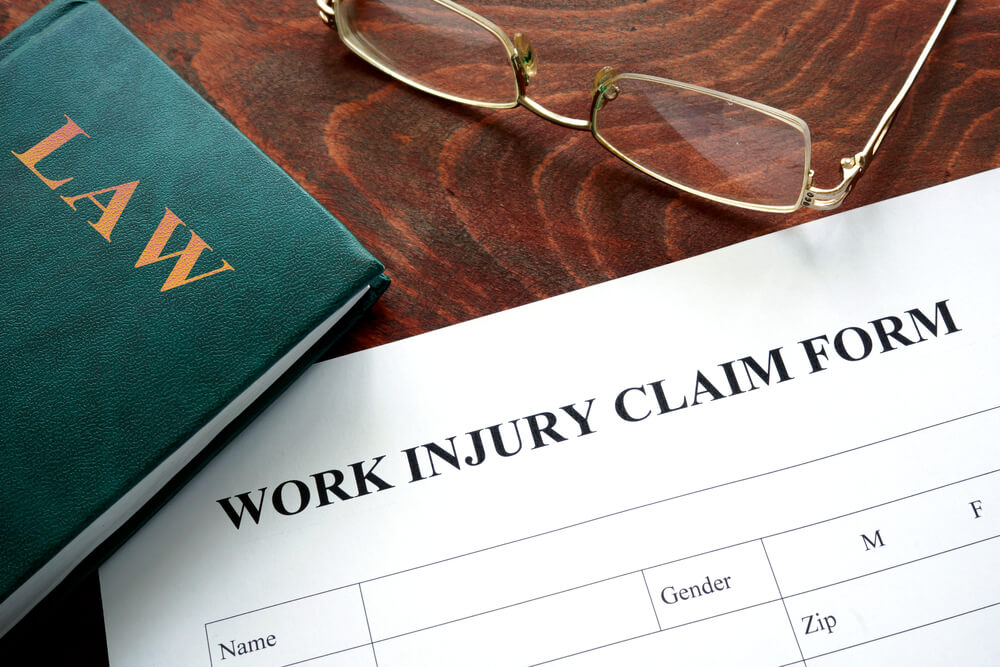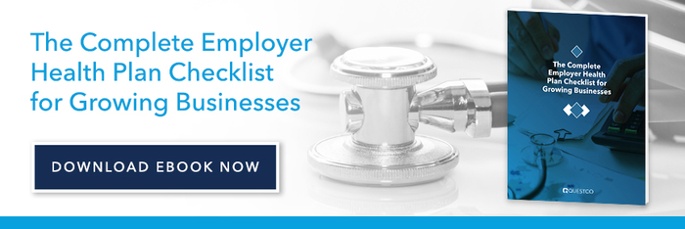Topic Outsourcing HR / PEO
How to Effectively Administer Worker’s Compensation Claims

December 8, 2022 | By Questco

Despite your best efforts, workplace-related injuries and illnesses will happen. Purchasing workers’ compensation insurance is one way to protect yourself as an employer from excessive financial liability.
However, it is not enough to just buy workers’ compensation insurance. Effective management of workers’ compensation claims is also necessary to manage overall costs and minimize the disruption caused by worksite injuries.
Administering an effective workers’ compensation program is a full-time job. It requires reporting, communication, and constant review and improvement of workplace practices. Failure to effectively manage workers’ compensation claims can lead to an unsustainable rise in insurance premiums.
The resources spent administering your workers’ compensation program can often be better deployed on activities that help to grow your business. That’s why many organizations turn to Professional Employer Organizations (PEOs) to provide subject matter expertise in this complex and time-consuming area.
Obtaining workers’ compensation coverage through a PEO can save you money both in the administration costs associated with managing an effective workers’ comp program and through reduced premiums by gaining access to a large group policy.
Leaving the management of workers’ comp to the experts is one of the surest ways to reduce premiums. However, if you choose to administer the program in-house, here are the steps you need to follow to minimize the potential for and ultimate cost of worksite injuries:
Educate Employees
As an employer, you should establish written policies and procedures for supervisors to follow in the event of an injury. These procedures should be communicated to all employees to ensure they know what steps to follow when an injury occurs. That includes ensuring all claims are reported to your carrier promptly.
It also helps to inform employees about the coverage terms included in your workers’ comp policy, so they know what to expect in the event of an injury.
This education program needs to be set up before any injury takes place. It will help to reduce feelings of anxiety or uncertainty among employees if they are injured on the job. It also minimizes actions that could lead to delayed or denied claims.
Choose a Designated Representative
The company should identify one or more designated individuals responsible for handling injury cases. Employees should be trained to report all incidents to these designated representatives immediately. The representatives will then determine whether onsite first aid is required or what additional medical care is needed.
The designated individual can be a supervisor, a health and safety committee member, a manager, or a human resources officer.
The representative should have access to emergency contacts for all employees in the event of severe injuries and should be responsible for taking immediate action to ensure the accident scene is rendered safe to prevent further mishaps.
Complete Injury/Illness Reports
A report of an occupational injury or illness should be filed with the employer immediately but no later than 24–48 hours after the incident. Many workers’ compensation policies specify a time limit for reporting injuries (ensure your team is informed of that time limit).
The designated representative generally is asked to meet with the injured employee to complete the injury report. However, in some cases, you can also ask the employee to complete the report themselves.
Some employers create their own incident or near-miss report for reporting workplace safety incidents. Others use the “First Report of Injury” forms provided by their workers’ comp insurance carrier or an appropriate state agency.
Whichever form you choose to use, it should contain the following information:
- The date of the injury
- Where it occurred
- A description of the injury or illness
- The date when the employer became aware of the incident
- The date when the employee received the form
- The date when the employee returned the form to the employer
If the employee is asked to complete the form themselves, they should be given a deadline for submission. If they submit it digitally via email, there should be a way to record the date and time the report was submitted to the employer.
Inform Employees on Claims Procedures and Available Benefits
After an employee has been injured or had an occupational illness at the workplace, a chosen representative should meet with them to educate the employee on the claims processing procedure and what workers’ comp benefits are available to the employee.
Some of the information that should be covered in this meeting includes the following:
Injury/Illness Report
If not yet completed, this meeting is an excellent time to fill out the incident report.
Physician Selection
Some workers’ comp laws allow the employer to select a designated physician, at least for the first visit. Other states enable the employee to visit a doctor of their choice and to switch from one doctor to another without informing their employer.
The representative should inform the injured employee of their options based on local laws and the company’s workers’ compensation insurance policy terms.
Compensation Benefits
The representative may want to discuss wage replacement issues such as salary continuance and average wait time. Depending on the state compensation benefits, the injured employee may be entitled to receive from 66% up to 100% of their wages while recovering from their injuries.
The representative should also discuss the continuation of company-paid leave benefits such as sick leave, vacation days, and paid time off. Paid leave benefits can help the employee until the carrier approves replacement benefits.
The representative should also address compensation for time spent at medical appointments. According to the Fair Labor Standards Act, employees can be compensated for this time as hours worked if the employee was waiting for or receiving medical attention at the workplace. The same applies if they were going to get care at the direction of the employer.
File Injury/Illness Report
The next step is to file the injury or illness report with the employer’s workers’ compensation insurance carrier. The employer should check with the carrier on authorized methods of submitting the report, including e-submissions or telephone.
Maintain Contact with the Workers’ Comp Carrier
After the report is filed, the employer needs to maintain contact with the workers’ compensation carrier to ensure that any additional information required is submitted promptly. The employer may need to forward medical records and workplace documentation regarding the number of lost workdays, the employee’s return-to-work status, and salary continuation actions.
This information will be necessary to determine available compensation benefits for your employee.
Work Together to Establish a Timeline for Return to Work
Returning an employee to work should be one of the main priorities for the employer, even if it is in a light-duty capacity. The employer must communicate effectively with the employee and the workers’ compensation carrier to manage your return-to-work program. Through this communication process, it’s essential to establish a return-to-work timeline based on recovery progress.
Get the Employee into a Return-to-Work Program
As you develop the specifics of the employee’s return-to-work plan, there are several things to consider.
The employee may have medical restrictions that necessitate that they can only take on light-duty responsibilities. These duties should be less physically or mentally demanding to suit their limitations. If the employee accepts these light duties, they are deemed to have returned to work, which can be financially advantageous with respect to paid leave costs absorbed by the workers’ comp policy. The employee can be considered for roles that meet their medical restrictions that would otherwise have been filled by temporary help or overtime.
Suppose the employee does not accept a light-duty assignment offered by the employer. In that case, they can have workers’ comp benefits restricted, which will help reduce the overall cost of the incident.
Why Outsource Workers Comp Claims Management?
Workers’ comp claims management can quickly get out of hand for organizations with limited resources. When you partner with a PEO, they handle all administrative duties associated with a work-related injury or illness, including establishing a return-to-work program.
PEOs also provide access to reduced workers comp premiums by helping to manage the cost of claims, improving workplace safety and the associated potential for workplace injuries, and helping to reduce other factors that drive up the cost of insurance coverage.
Not only does this save you money, but it lets your in-house HR team and other workplace managers focus on what matters most: helping your company grow.




